Here’s my top ten list for Quito, Ecuador! Read about our Amazon Adventures here.
Check out pix from our time in Quito here. Quito, Ecuador is a beautiful city, rich in culture and history. It has one of the best preserved colonial city centers in Latin America which has been designated a UNESCO world heritage site. We visited in January 2025 and never felt unsafe. You may remember back in January 2024, gunmen stormed a TV station- this was in Guayaquil. At the time of writing, traveling to Guayaquil is not advised.
Quito has its challenges, like any other city, and has safe areas and places you don’t go, especially at night. At the time of our travel, it was as safe as any other major city. Most crimes against tourists are non-violent- pickpocketing and purse snatching. When you visit any city, be smart. Be aware of your surroundings, avoid looking lost, keep your hand on your purse or your backpack in front. Avoid political gatherings, and leave expensive jewelry at home, or at least in your hotel safe.
Don’t go out alone at night unless you’re familiar with the area or are sure it’s safe. Listen to your spidey senses, don’t walk around oblivious to the world, earbuds in, looking at your phone. People have been known to ride by on scooters and grab purses or phones. If you’re really nervous, just stick with organized tours.
Every city has bad neighborhoods. We stayed in the old town and didn’t venture far at night. We wandered around the area, walked to some historic sites, and took tours.
But, like I said, be smart. Visit the Department of State website before traveling anywhere, and register with the Smart Traveler Enrollment Program Just in case!
Now that that’s out of the way, pack your bags and head to Carita del Dios (The Little Face of God)!
Quito is one of the highest capital cities in the world at an altitude of 9350 feet. It is surrounded by the Andes Mountains in a dramatic setting, and is often shrouded by mist. It straddles the equator, so in addition to being at high altitude, it is also at zero latitude. The sun is intense here, so be sure to wear sunscreen and a hat. In addition, stay hydrated- altitude sickness is a real possibility here.
We stayed in the historic district at Hotel Patio Andaluz. I recommend staying in the historic district your first time in Quito, because that’s where all the cool historic sites are. Other recommended neighborhoods are Le Mariscal for those looking for nightlife, and La Floresta is the art district and has lots of nice dining options.
Here are my Top Ten activities and sites for your time in Quito:
1. Food and Street Art Tour
We booked a food and street art tour through Viator called “Quito After Dark,” and I highly recommend this tour! Book it for yourself here.
Santiago met us promptly on time and showed us notable pieces of street art. Then, he took us to a local street art gallery which was a unique and fun experience!
Nudo is a collaboration of local artists who use various methods and media to express their inner workings and political views, and they have a street art gallery. Contact info and how to find them:
The recent history of Ecuador and Quito in particular in the setting of the insanity of our modern world, coupled with today’s technology, has created a fertile environment for these young, passionate people to create unique works of art with powerful statements. Visit this hidden gem in the La Floresta neighborhood and leave some space in your suitcase for purchases!
Even better than visiting on your own, book this tour with Santiago and let him show you this gallery, along with local murals and food at local hotspots. We had some of the best food of our entire trip at small, intimate establishments with Santiago. Better still was seeing the city through the eyes of a local artist, activist, and creator. We truly got a local’s perspective and insider’s view of the city and recent events, and as a bonus got a backstage peek into real life here.
It just so happened that one of the artists, Ache, was in the gallery when we visited and we got to meet him and get some insight into his unique pieces. Check out his website here. He used social media to create interactive artwork that transforms before your eyes with the aid of augmented reality.
As for food, I can’t even tell you the names of the places where we ate, as they were small, holes-in-the-wall… but the food was fresh, bursting with flavor, and absolutely delicious! It rained for most of our tour, but we didn’t care! We had a guanabana (soursop) drink, humita (sorta like a tamale), corviche (green plantain balls filled with an albacore-peanut mixture), and plantains every which way-fried, stuffed, with cheese, with chicharrones, etc! We ended the night with canelazo, a hot spiced cinnamon drink, at a cozy bar in La Floresta, discussing art, politics, and the meaning of life. The drink was meh for me, but the conversation great!
- Works by Erre
- Art at Nudo
- The Artist Ache
- Street Art, La Floresta
- Restaurant Owner
2. Basilica del Voto Nacional
The “Basilica of the National Vow” is a must-visit while in Quito, and it was not included in our city tour- barely mentioned, actually. This was a little odd, as it was one of our favorite attractions in the city. It is the largest Neo-gothic basilica in the Americas, and is unique, interesting, and full of surprises.
The basilica remains unfinished which, it turns out, is a good thing, since legend says that when it is complete, the end of the world will come.
This cathedral watches over the city from its perch on Itchimba hill, its clocktowers visible from pretty much everywhere in the city. It is worth a couple of hours, as you can climb to multiple levels and take in numerous views of the city, injecting a little adrenalin into your visit- some of the climbs are steep and a little sketchy. It is a labyrinth where a new surprise awaits around every turn of the spiral staircase. There are 24 chapels, little shops, cafes, and crannies galore.
Instead of the typical gargoyles seen on European basilicas, here you’ll find iguanas, tortoises, armadillos, and condors, animals found in Ecuador.
Don’t miss it!
- Quito, Ecuador
- Quito, Ecuador
- Quito, Ecuador
- Quito, Ecuador
- Quito, Ecuador
3. Intiñan Solar Museum
This is truly a hidden gem. It is tucked away behind the Mitad del Mundo and its nice exhibits that tell an abbreviated history of Ecuador. In my opinion, it is way better than the museum inside the Mitad del Mundo monument. You can definitely see both in one day, but if you are short on time I’d suggest viewing the Mitad del Mundo monument from the outside and spending your time at the Intinan Solar Museum.
The admission is only about $4 USD per adult, and you are assigned a guide after buying your ticket. Our guide was funny, knowledgeable, and efficient. She spoke about the history, traditions, and natural wonder of Ecuador, shuttling us through the museum’s exhibits and exercises (or should I say “eggcersises” IYKYK) in about an hour.
The museum is transected by a red line representing the equator, and you can do several experiments unique to this latitude. Not only did we learn about Ecuador, but we had a refresher course/primer on planetary geodesy.
4. Pululahua Village
Pululahua Village is a farming village located within the crater of an extinct volcano. We took an uber and checked in out on our own, but you can arrange a tour. There’s a little string of gift shops, a cafe, and a hiking trail that takes you down to the village. We opted for a little shopping, a cup of coffee, and an empanada overlooking the mist-shrouded village, but you can take the mile or so hike down and visit local homes. Pack plenty of water, as you also have to hike out, and this can be strenuous.
5. Mitad del Mundo
This monument to the equatorial country named for this imaginary line, Ecuador, is not really a must-visit, but it has some cute photo ops and learning opportunities. The area has little shade and many stairs, so bring your water.
Mitad del Mundo has a few fun diversions that can be worth a visit if you have time. There’s an opportunity for chocolate tasting, simulated ancestral housing, a beer museum, a planetarium, and the main monument. We walked through the ancestral housing and past the gamut of souvenir shops to check out the monument itself. Inside is a multi-level museum that tells about the history and culture of Ecuador in a series of exhibits.
- At the Monument
- Intinan Solar Museum
- On The Equator
- Over Pululahua Village, Quito
6. Iglesia de la Compañía de Jesús
This is one of the major cathedrals in the city and it is ornate. The facade is entirely carved of volcanic stone, which suits Quito, since it is surrounded by volcanoes in various states of activity.
Inside, the amount of gold is astounding. Impressive, sure. But when the cathedral was built in the 1600s-1700s, people were starving and suffering. Meanwhile the Jesuits are flaunting the wealth of the church by coating everything in gold leaf. The architectural design, they asserted, was intended to pay homage to Incan gold-coated pyramids and the sun god, ensuring the structure beautifully reflected sunlight on the gold during the equinoxes. I think, instead, it was a flex to show off their wealth and power to help them control the masses. Never mind the fact that much of the gold and other building materials came from the rainforest. And, the church is now closed on the vernal and autumnal equinoxes.
It is worth a look and walk-through, especially if the crypts are open. They weren’t when we were there.
7. Plaza Grande (Independence Square)
Plaza Grande, or Independence Square, is the city center of historic Quito. The centerpiece of this bustling park is a monument to those who fought for independence from the Spanish on August 10, 1809. There are nice places to sit in the shade and people watch as you enjoy your ice cream or custard in a cone and contemplate the history of this lovely place.
The square is surrounded by the Carondelet Palace, the Metropolitan Cathedral, the Archbishop’s Palace, the Municipal Palace and the Plaza Grande Hotel.
8. Iglesia de San Francisco
The Iglesia de San Francisco, a monumental testament to Baroque architecture with a marked influence of indigenous artistry, dominates Quito’s historic center. Construction, initiated in 1535 shortly after the city’s founding, spanned nearly a century, resulting in a complex that blends Spanish Renaissance and Mudéjar styles with local interpretations. Its imposing facade, flanked by twin bell towers, conceals a vast interior where intricately carved wooden altars, coated in gold leaf, contrast with the stark, volcanic stone of the walls. The church’s design, attributed to Flemish friar Jodoco Ricke, incorporated local labor and symbolism, evident in the sun-faced figures and indigenous motifs interwoven into the decorative elements, making it a crucial example of the “Quito School” of art and a UNESCO World Heritage site.
We entered the main cathedral through the choir and were able to look down on the nave. A service was in progress when we visited, and we were treated to a monk singing the Battle Hymn of the Republic (odd choice for a monk in Quito, Ecuador…) in a horribly off-key warble that made us hurry to get out. We were able to see the statue that the Virgin of Quito on El Panacillo was fashioned after.
9. El Panacillo
El Panacillo is a volcanic hill in Quito, so called because of its resemblance to a small piece of bread… um ok… in 1975, Spanish artist Agustín de la Herrán Matorras began building a 41 meter (135 foot) high monument of the Virgin Mary. It was constructed with 7400 pieces of aluminum and fashioned after the 48 inch wooden sculpture, the Virgin of Quito, created by Bernardo de Legarda in 1734. It is taller than Christ the Redeemer in Rio de Janeiro, Brazil, and is the tallest bronze sculpture in the world.
This is said to be the only statue of Mary with angel wings, symbolic of her status as the guardian angel of Quito and the world. She stands atop a globe with a snake underfoot, symbolizing her victory over evil and guardianship of earth. According to a plaque on the statue, she represents the Woman of the Apocalypse, which you can read about here.
It is worth a visit to see this marvel up close and take in sweeping views of Quito and its stunning location in a valley surrounded by misty volcanic peaks.
10. Chocolate Demonstration and Tasting
Chocolate actually originated in Ecuador, and this country produces some of the best chocolate in the world. Tasting chocolate is a lot like tasting wine, with the flavor profile depending upon characteristics of the climate and soil in which the beans grow. Ecuadorians are proud of the flavor of their chocolate, and prefer it darker, with less sugar and milk.
There are so many places to learn about the history and making of chocolate in Quito, any would probably be good. They are generous with samples and love to talk about their chocolate! Stop in to a shop for a quick taste, and purchase a few bars to take home for souvenirs. If you have more time, do a formal chocolate tasting or a chocolate tour.
We did our chocolate tasting at Yumbo’s Artisanal Chocolate, one of the best in Ecuador. They run tours all day long beginning at 10:00 am, and no reservations are necessary. We tasted the raw Cacao bean, nibs, several types of solid chocolate, hot chocolate, and a brownie. Chocolate flavored beer was even available. This shop in conveniently located on San Francisco Plaza, so you can make it a stop on your city tour.
Much of Ecuador’s chocolate is sustainably sourced and fair-trade certified. Other recommended brands include: Kallari, Pacari, and Chez Tiff in Old Town. Read more about the history of chocolate at Happy Gringo.
- Quito, Ecuador
- Quito, Ecuador
- Brownie and Hot Chocolate at Yambo’s
- Courtyard at the Monastery
- Pipe Organ
- In the Historic Square
Summary
To sum it up, you should definitely visit Quito!

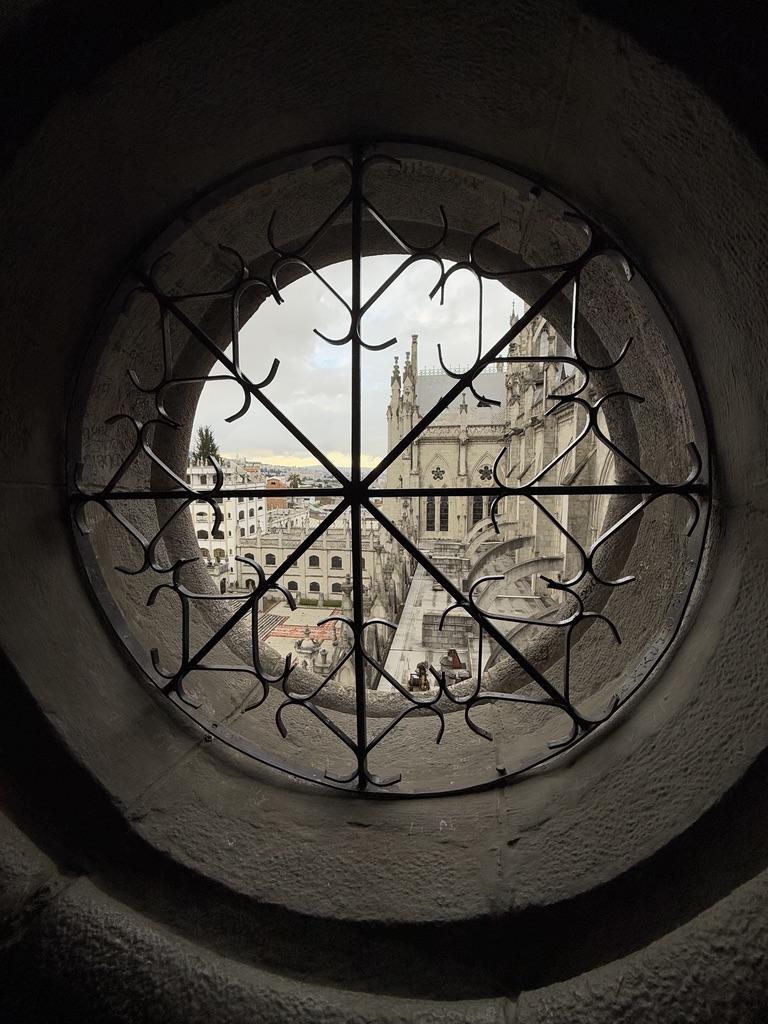


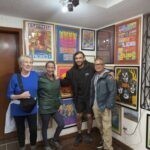


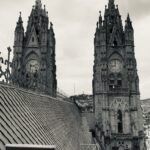
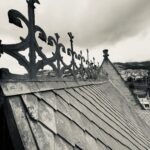
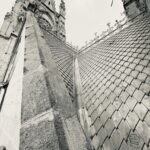

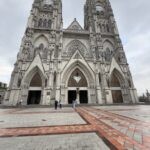




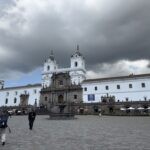
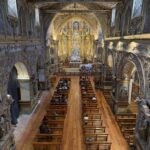
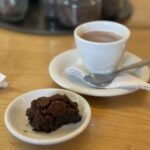
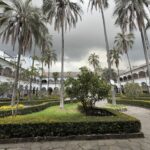

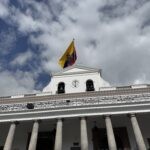


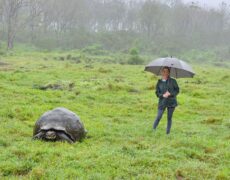
0 Comments